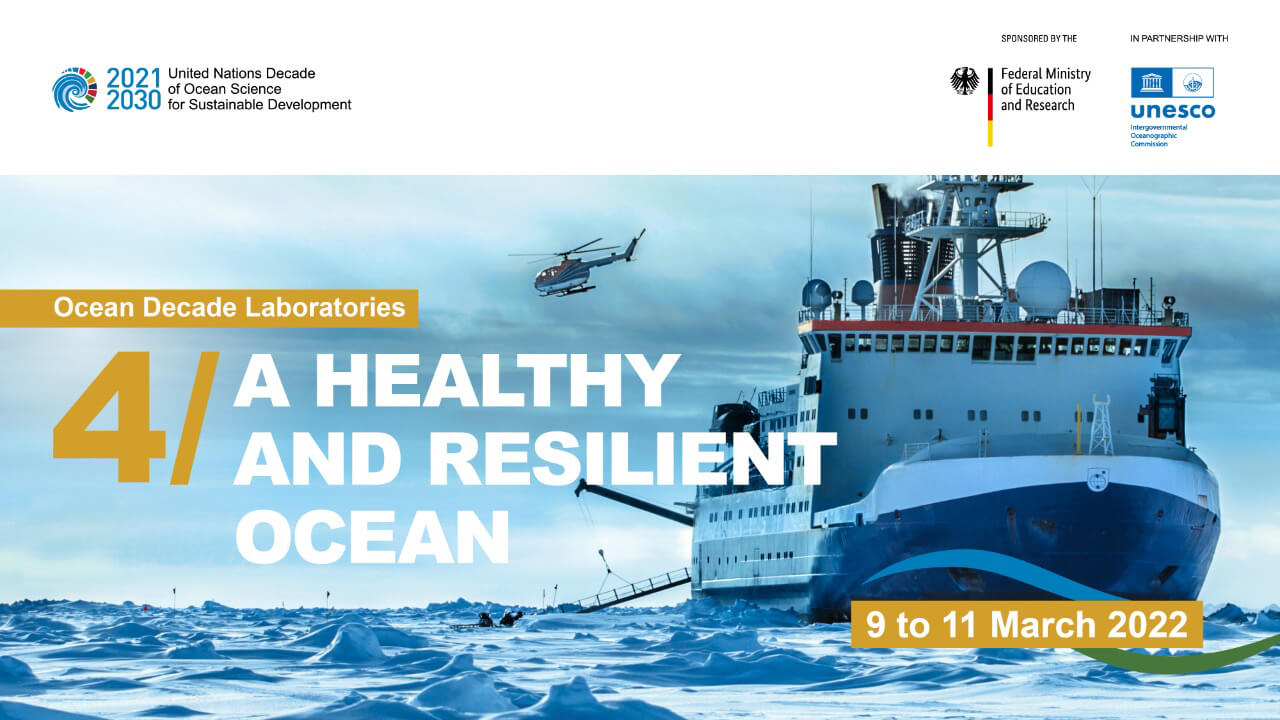
Over 600 people from 78 countries came together for the fourth Ocean Decade Laboratory – “A Healthy and Resilient Ocean” from 9 to 11 March 2022.
The Chairs of the Laboratory, Karen Wiltshire from the Alfred Wegener Institute Helmholtz Center for Polar and Marine Research (AWI), and Tim Jennerjahn from the Leibniz Centre for Tropical Marine Research (ZMT) expressly welcomed the variety and global scale of participants. Not only scientists but people from all walks of life shared their interest in a healthy and resilient ocean.
The Core Event showed best practices in the most relevant disciplines of ocean science for a healthy and resilient ocean, such as observation and monitoring, including traditional knowledge as well as citizen science and society. “There must be more communication, more collaboration between science and society. And we need more events like this to bring people together and to discuss these issues and spread the word,” Tim Jennerjahn remarked. Highlighting the aim of the Ocean Decade. Karen Wiltshire concluded, “We need to involve everyone because we are all custodians of this blue planet.”
32 Satellite Activities took place in the course of the three-day Ocean Decade Laboratory. Various stakeholders shared their knowledge and discussed impacts and solutions for ocean health in panel discussions, workshops, lectures or other formats. Besides a global partnership on reducing plastic waste by a British NGO or how society and science collaborate for a healthy ocean in China, another event focused on the impact of the fashion industry on ocean health.
The “Ocean Accessibility and Fashion” lecture by fashion designer and activist Runa Ray highlighted the complexity and global impact, as clothes for consumers in industrialised countries are produced in developing countries such as Bangladesh where wastewater is often not recycled but instead disposed directly into rivers or off the coastline.
“There is a saying that when a dog takes a swim in a river in Bangladesh, you can tell what colour is going to trend next. If the dog comes out of the water blue or yellow or green, you know that that’s the colour of the coming season,” Runa Ray explained in her Satellite Activity. “So it is important that a fashion student gets to study things like the dyeing industry or the shipping industry because those are an enormous part of the global fashion industry that we don’t always think about.”
The United Nations Decade of Ocean Science for Sustainable Development (2021-2030) has set the goal of bringing together scientists and stakeholders alike to restore ocean health and prepare a path for sustainable development.
“By having people from all over the world contributing the Satellite Activities, I really felt that we were able to put local expressions on global problems in this Laboratory,” Tim Jennerjahn summarised.
If you missed the Ocean Laboratory “A Healthy and Resilient Ocean” you can watch the Core Event, a four-hour introductory session and the 90-minute Wrap-up in their entirety here: Core Event and Wrap-Up. A short video summary of the Core Event is available here.